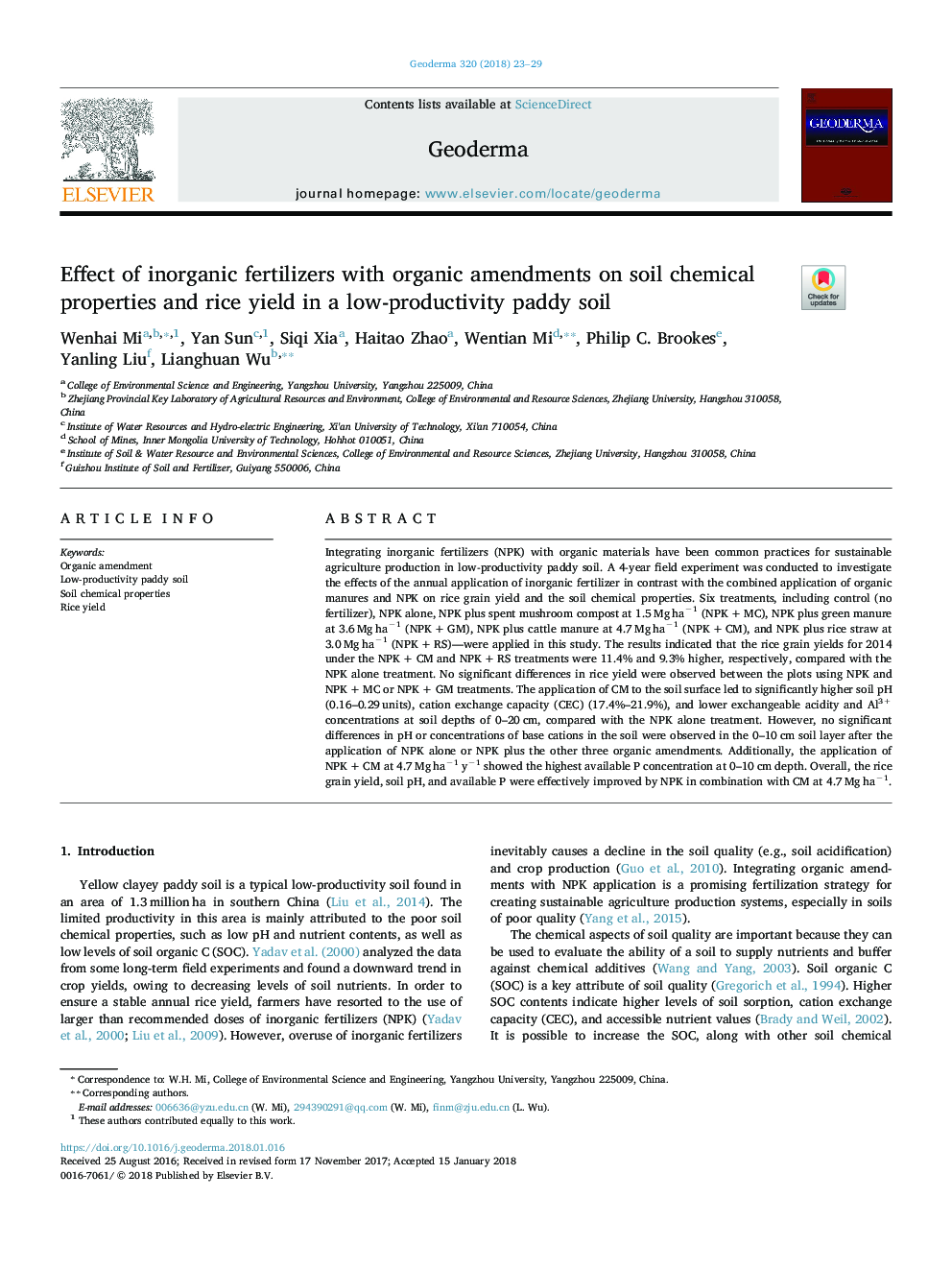| Article ID | Journal | Published Year | Pages | File Type |
|---|---|---|---|---|
| 8894114 | Geoderma | 2018 | 7 Pages |
Abstract
Integrating inorganic fertilizers (NPK) with organic materials have been common practices for sustainable agriculture production in low-productivity paddy soil. A 4-year field experiment was conducted to investigate the effects of the annual application of inorganic fertilizer in contrast with the combined application of organic manures and NPK on rice grain yield and the soil chemical properties. Six treatments, including control (no fertilizer), NPK alone, NPK plus spent mushroom compost at 1.5â¯Mgâ¯haâ1 (NPKâ¯+â¯MC), NPK plus green manure at 3.6â¯Mgâ¯haâ1 (NPKâ¯+â¯GM), NPK plus cattle manure at 4.7â¯Mgâ¯haâ1 (NPKâ¯+â¯CM), and NPK plus rice straw at 3.0â¯Mgâ¯haâ1 (NPKâ¯+â¯RS)-were applied in this study. The results indicated that the rice grain yields for 2014 under the NPKâ¯+â¯CM and NPKâ¯+â¯RS treatments were 11.4% and 9.3% higher, respectively, compared with the NPK alone treatment. No significant differences in rice yield were observed between the plots using NPK and NPKâ¯+â¯MC or NPKâ¯+â¯GM treatments. The application of CM to the soil surface led to significantly higher soil pH (0.16-0.29â¯units), cation exchange capacity (CEC) (17.4%-21.9%), and lower exchangeable acidity and Al3+ concentrations at soil depths of 0-20â¯cm, compared with the NPK alone treatment. However, no significant differences in pH or concentrations of base cations in the soil were observed in the 0-10â¯cm soil layer after the application of NPK alone or NPK plus the other three organic amendments. Additionally, the application of NPKâ¯+â¯CM at 4.7â¯Mgâ¯haâ1â¯yâ1 showed the highest available P concentration at 0-10â¯cm depth. Overall, the rice grain yield, soil pH, and available P were effectively improved by NPK in combination with CM at 4.7â¯Mgâ¯haâ1.
Related Topics
Physical Sciences and Engineering
Earth and Planetary Sciences
Earth-Surface Processes
Authors
Wenhai Mi, Yan Sun, Siqi Xia, Haitao Zhao, Wentian Mi, Philip C. Brookes, Yanling Liu, Lianghuan Wu,
